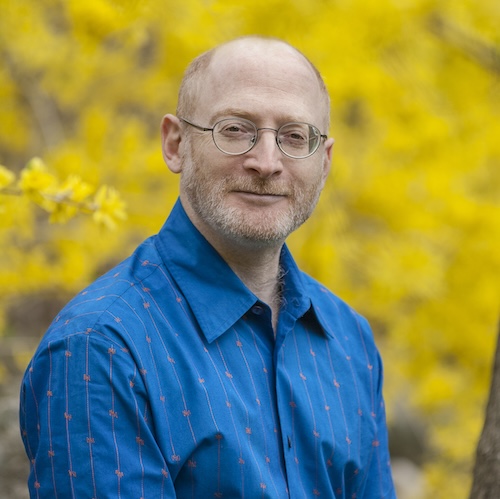Kernis’s energetic premiere takes flight with Palm Beach Symphony

The Palm Beach Symphony gave the world premiere of Aaron Jay Kernis’s Portraits and Diversions Wednesday night at the Kravis Center.
World premieres may be unusual events for many orchestras. But for the Palm Beach Symphony under conductor Gerard Schwarz, they have become routine.
The fourth world premiere of the season took place Wednesday at the Kravis Center in West Palm Beach, where the orchestra played a lengthy and substantial new work by Pulitzer Prize-winning American composer Aaron Jay Kernis.
The concert had an air of celebration. Many members of the audience came dressed to the nines for the orchestra’s 50th anniversary gala that followed the performance. The musicians’ chairs were draped in gold.
The new Kernis work was commissioned for the orchestra by Bonnie McElveen-Hunter, chief executive officer of Pace Communications and former U.S. ambassador to Finland, in honor of Leonard and Judy Lauder.
In brief remarks from the stage, the composer described the piece as “essentially a small symphony” and explained how he sought inspiration by spending time with the Lauders, reading their writings, viewing their art collection and their photographs.
Kernis gave his “small symphony” the title Portraits and Diversions. The work was accessible but layered, with lots of intricate passages, a general tone of optimism and a strong sense of overall structure. Kernis’ style is sometimes called “neo-romantic,” but the term seems too narrow to encompass the different threads of this work.
The opening movement began with slow, solemn passages in the brass. Strings joined in, with the work carrying a tranquil, optimistic tone. A fast section followed, with strings playing rapid passages, which were marred by some intonation and ensemble issues. From these busy moments, the brass again emerged to bring clarity to the music.
The second movement, inspired by the visual art of Picasso, Braque and the photographer Edward Weston, had a darker tone with muted strings, pizzicatos and eerie passages that sounded like dancehall tunes recalled in a dream. The third movement, described by the composer as a love song, began in a tense tone that didn’t sound particularly romantic, but then moved to moments of tenderness for flute over tremolo strings and oboe. The last movement lurched forward with strongly marked rhythms and busy passages, leading to a climax of a weighty, choir-like passage for the brass.
Some of the rapid sections of the outer movements felt excessively complex, possibly from a lack of precision in the playing that made it harder to appreciate their place in the work. But the sheer energy of the piece came through effectively, and during its 20 minutes, the work evocatively traversed a large landscape, from the boisterous first movement to the romantic intimacy of the third and the brassy triumph of the finale.
Emanuel Ax took the stage to play Mozart’s Piano Concerto No. 25, in one part of the pianist’s busy visit to South Florida. The previous evening he played a recital at Florida International University, and this weekend he plays Beethoven’s Piano Concerto No. 3 in two concerts with the New World Symphony in Miami Beach.
At 74, Ax showed no signs of wear from the grueling schedule. His technique remained solid and his tone production effortless, as shown in the genial mezzoforte with which he produced rapid notes that accompanied melodies in the orchestra. Ax played with incisive precision in a tense minor-key dialogue with the woodwinds.
After a subdued performance of Mozart’s Violin Concerto No. 3 with Pinchas Zukerman in January, the orchestra this time gave a lively account of its part of the piano concerto. The opening tutti was buoyant and energetic, with tight ensemble precision.
In the Andantino, winds played with warmth and finely balanced tones. Ax’s embroidery of fast notes came through easily, and the concluding Allegretto came off with buoyancy and wit.
As an encore, he played Schubert’s “Ständchen,” softening his tone for a few minutes of billowing romantic warmth.
After intermission, the orchestra played Tchaikovsky’s Symphony No. 4, with Schwarz leading them through an account that was big, turbulent and dramatic
The opening fanfare in brass came off initially as more ominous than violent, with each reiteration arriving with more ferocity and shock.The restless theme ascended through strings and solo wind instruments, full of longing. A passage in the woodwind choir came off with rich, balanced tones.
The Andantino showcased the orchestra’s fine wind players, with flute, oboe, clarinet and other instruments tossing off wisps of melody with poignance and style. Particularly fine was the long bassoon solo in the main theme. The Finale was full of nervous energy, with the return of the grim opening fanfare coming off with stark power.
The Palm Beach Symphony’s next concert takes place 7:30 p.m. April 25 at the Kravis Center. The program includes Beethoven’s Symphony No. 9 and Piano Concerto No. 2 with soloist Ignat Solzhenitsyn. palmbeachsymphony.org
Posted in Performances
Leave a Comment
Thu Mar 7, 2024
at 8:56 am
No Comments